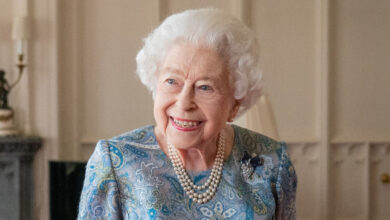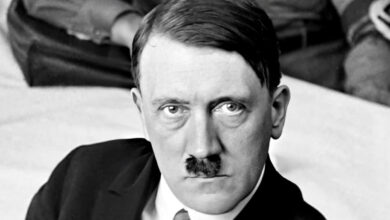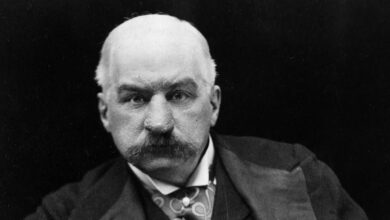“I see Earth! It is so beautiful!” – Yuri Gagarin
Podcast: Play in new window | Download
Subscribe: Spotify | Amazon Music | Youtube Music | RSS
Yuri Gagarin Biography
Yuri Alekseyevich Gagarin was born on 9 March 1934 in a small village called Klushino which is about 190km from Moscow, Russia. His parents, Alexey Ivanovich and Anna Timofeyevna worked on a collective farm which is where a number of farmers work a farm together for the collective good, either for the benefit of the community or the state. Alexey was a carpenter and bricklayer and Anna was a milkmaid. As well as Yuri, the couple had three other children, a boy called Valentin who was older than Yuri, a girl called Zoya who was also older and another boy called Boris who was younger.
When the Nazis advanced on Moscow during the Second World War, the Gagarin residence was taken over by a Nazi officer and the Gagarin family had to make do with a mud hut that they were forced to build for themselves at the back of the house. Measuring only three metres by three metres, they lived there for nearly two years until the occupation ended. Valentin and Zoya, Yuri’s older brother and sister were forced to move to Poland as slave labour in 1943 and they were not seen again until after the war ended in 1945. In 1946, the nearby town of Gzhatsk became the new home for the Gagarins and Yuri was able to continue his education there.
When Yuri Gagarin was sixteen years old, in 1950, he became an apprentice foundryman at a steel plant near Moscow and took evening classes to complete a seventh-grade education. He graduated in 1951 and entered into a training program to study tractors at the Saratov Industrial Technical School. At the weekend he trained as a Soviet air cadet at a flying club near to Saratov and learned to fly. As he was also near to the Volga River, Yuri also earned extra money as a dock labourer.
In 1955, after he had graduated from technical school, he was drafted by the Soviet Army and as he was already a pilot, he was sent to the Air Force Pilot’s School located in Orenburg which is about 1600km to the East of Moscow, near to the border with Kazakhstan. There, he learned to fly the MiG-15 jet fighter and took his first solo flight in the plane on 1957.
On the same day as he graduated from Orenburg, 7 November 1957, Yuri Gagarin married Valentina Ivanova Goryacheva who was a medical technician graduate at Orenburg. They went on to have two daughters together, Yelena and Galina.
By this time the Soviet space program was accelerating and the race was on against the United States to be the first to put a man into space and so, the search was on to find willing and able pilots. After a long selection program, Yuri Gagarin and nineteen other pilots were selected. Due to their performances during the arduous training program, Yuri and another pilot called Gherman Titov were shortlisted to make the first flight. In an anonymous vote by the other nineteen pilots, all but three said that Yuri Gagarin should be the first to fly into space, so on 12 April 1961, he did aboard Vostok 1. Gherman Titov would become the second to do so, aboard Vostok 2 on 6 August the same year.
Following his historic flight, where he also became the first human being to orbit the Earth, Yuri Gagarin became a national hero and a celebrity around the world. The scale of the demonstrations of support in cities throughout the USSR was second only to those celebrating the end of the war. He was paraded through the streets of Moscow on his way to a ceremony at the Kremlin where Nikita Khrushchev awarded him Hero of the Soviet Union.
He travelled quite a lot after this around Europe and visited the United Kingdom, Germany, Canada, Brazil and Japan among others.
In 1962 Yuri Gagarin was elected to serve as Deputy to the Soviet of the Union, which is one of the two chambers of the Supreme Soviet of the USSR. He was also elected to the Central Committee of the Young Communist League and returned to the cosmonaut facility at Star City to work on designs for reusable spacecraft. On 12 June of the same year, he was also promoted to lieutenant colonel and then again to colonel on 6 November 1963.
During this time Gagarin was the backup pilot for Vladimir Komarov who was due to fly in Soyuz 1 and despite Gagarin’s concerns that additional safety precautions had not been implemented, Soyuz 1 was launched. It crashed on its return after a parachute failure and Komarov was killed. The accident led to the authorities banning Gagarin from further space flight missions due to concerns about losing a national hero in just such an accident.
Yuri Gagarin became a deputy training director at Star City on 20 December 1963 and in 1966 he began training to re-qualify as a fighter pilot. On 27 March 1968, during a training flight, the MiG-15 in which he and his flight instructor Vladimir Seryogin were travelling crashed near to the town of Kirzhach and both men were killed. The bodies of both pilots were cremated and they are buried in the walls of the Kremlin in Moscow.
The cause of the crash still remains somewhat of a mystery. Some have blamed a combination of errors by ground crew and air traffic controllers whilst a more prominent theory in recent years involves a near miss with another aircraft, which caused Gagarin’s MiG to enter an uncontrollable spiral dive.
Yuri Gagarin and his achievements have been commemorated in a number of ways. Since 1962, 12 April, the date he flew into space was celebrated in the Soviet Union as Cosmonautics Day. This, since 2011 has been recognised by the United Nations as the International Day of Human Space Flight.
Neil Armstrong and Buzz Aldrin left a memorial satchel containing medals in honour of Gagarin and Komarov on the moon during the Apollo 11 mission and the Cosmonaut Training Centre in Star City was renamed after him.
In 1968 the town of Gzhatsk where he grew up after the war was also renamed. It is now simply called Gagarin in his honour of its hero.
Podcast: Play in new window | Download
Subscribe: Spotify | Amazon Music | Youtube Music | RSS




